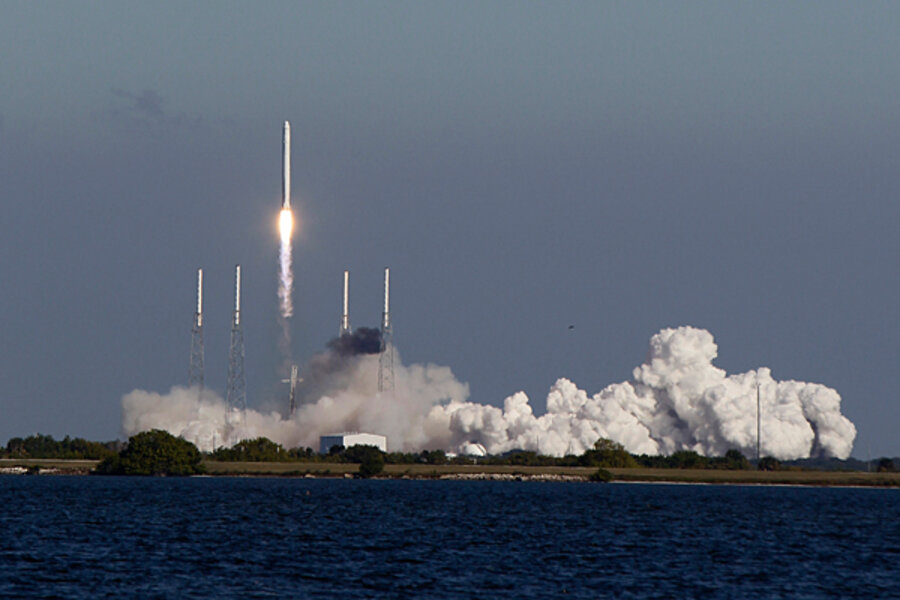SpaceX Falcon 9 rocket launch: First step of new space era?
Loading...
One vision for the future of spaceflight in the United States soared into the skies over Cape Canaveral this morning with the launch of Falcon 9, the two-stage, privately designed rocket tabbed to pick up many of the soon-to-be extinct space shuttles' chores.
The rocket lofted SpaceX's Dragon capsule, which could carry cargo and eventually crews to and from the International Space Station under NASA's Commercial Orbital Transportation System (COTS) program.
The launch marked the first of at least two demonstration flights SpaceX must perform to show it is capable of fulfilling its $1.6 billion contract for 12 resupply flights to the space station once the shuttles retire next year. Wednesday, the cargo is modest; it consists of thousands of mission patches commemorating the milestone, says Gwynne Shotwell, president of SpaceX, which is based in El Segundo, Calif.
The shift to commercial carriers for space-station-related missions represents a cornerstone of President Obama's attempt to put NASA on what the administration argues is a financially sustainable course – one that would allow the agency to afford to send humans to explore destinations beyond low-Earth orbit.
This means terminating the enormously expensive shuttle program and farming out the comparatively routine matter of servicing the space station to private contractors.
"Cargo services have become more important than ever," now that the space station's life has been extended to at least 2020, says Phil McAlister, acting head of NASA's commercial spaceflight development office.
"We're looking forward to the day when we have multiple, redundant capabilities" for resupplying the space station beyond services provided by Japan, Russia, Europe, he said during a prelaunch briefing.
This approach, however, has been criticized by several lawmakers on Capitol Hill whose constituents include NASA centers and NASA contractors. They deride COTS participants as "commercial hobbyists" and "amateur rocket companies."
Wednesday's launch could go a long way toward blunting some of that criticism.
Although NASA and SpaceX officials have aimed for a flawless mission, they caution that the history of spaceflight suggests initial launches stand a better than even chance of encountering serious problems.
"Spaceflight is very, very difficult," Mr. McAlister says. Undoubtedly, there will be "anomalies as we go through the test program. But, he adds, that's why test programs exist – to uncover glitches that might not jump out from studying drawings or modeling a rocket's performance on a computer.
Still, "if we get through this demonstration flight, and we have a clear path to the second demonstration flight, we will have achieved a great success," McAlister says.
The Falcon 9 is a two-stage rocket designed to launch payloads up to 367 tons into low-Earth orbit, where the International Space Station is. The Dragon capsule is designed for cargo, and eventually could carry a crew of five to seven astronauts, according to SpaceX. The capsule is designed to mate with the space stations docking mechanisms. The first stage as well as the capsule are reusable.
If all goes well, SpaceX could launch its first space-station resupply mission in November 2011, says Ms. Shotwell.





